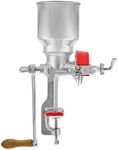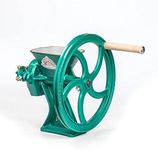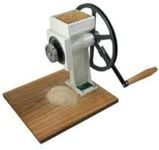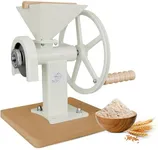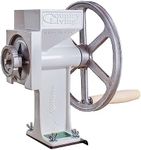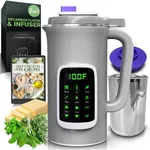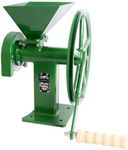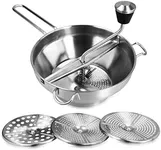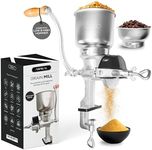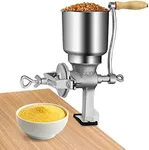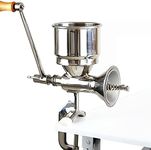Buying Guide for the Best Hand Crank Grain Mills
Choosing the right hand-crank grain mill can make a significant difference in your kitchen experience, especially if you enjoy baking or cooking with freshly ground grains. Hand-crank grain mills are manual devices that allow you to grind grains into flour or meal. When selecting a grain mill, it's important to consider several key specifications to ensure you get the best fit for your needs. Here are some essential factors to consider and how to navigate them.MaterialThe material of the grain mill is crucial for durability and performance. Common materials include stainless steel, cast iron, and ceramic. Stainless steel is resistant to rust and easy to clean, making it a good choice for frequent use. Cast iron is very durable and can handle heavy-duty grinding but may require more maintenance to prevent rust. Ceramic is excellent for grinding fine flour but can be more fragile. Choose a material based on how often you plan to use the mill and the type of grains you will be grinding.
Grinding CapacityGrinding capacity refers to how much grain the mill can process at one time. This is important for efficiency and convenience. Smaller mills may be suitable for occasional use or small batches, while larger mills are better for frequent use or larger quantities. Consider your typical usage and choose a mill that can handle the amount of grain you plan to grind without requiring constant refilling.
Adjustable Grinding SettingsAdjustable grinding settings allow you to control the coarseness or fineness of the flour. This is important for achieving the desired texture for different recipes. Some mills offer a wide range of settings, while others may have limited options. If you plan to use the mill for various types of grains and recipes, look for a model with versatile grinding settings. If you only need a specific type of flour, a simpler model may suffice.
Ease of UseEase of use encompasses how comfortable and straightforward the mill is to operate. Features like ergonomic handles, smooth cranking mechanisms, and easy assembly can make a big difference. If you have limited hand strength or plan to use the mill frequently, look for a model designed for ease of use. Test the crank mechanism if possible to ensure it operates smoothly and comfortably.
Size and StorageThe size of the grain mill affects where you can store it and how much counter space it will occupy. Compact models are easier to store and may be ideal for smaller kitchens, while larger models may offer more capacity but require more space. Consider your kitchen layout and storage options when choosing the size of your grain mill.
MaintenanceMaintenance involves how easy it is to clean and care for the grain mill. Some materials and designs are easier to maintain than others. Stainless steel and ceramic mills are generally easier to clean, while cast iron may require more care to prevent rust. Look for models with removable parts for easy cleaning and consider how much time you are willing to spend on maintenance.
